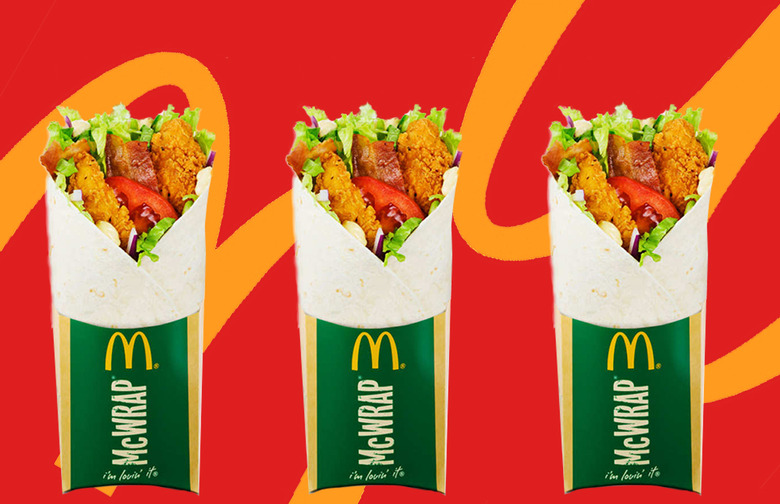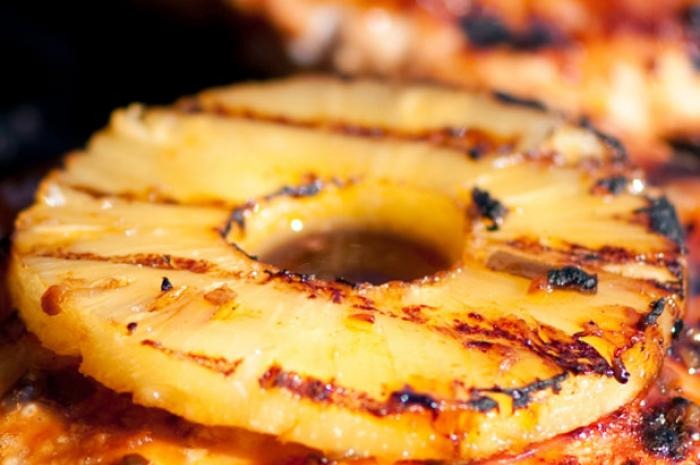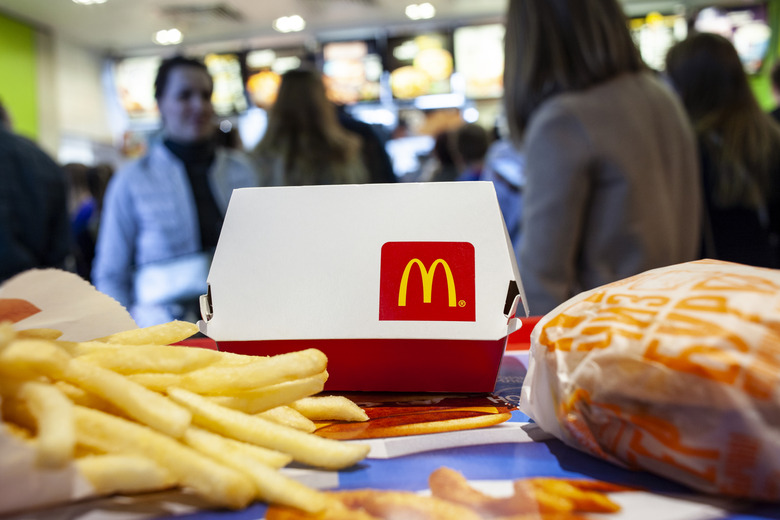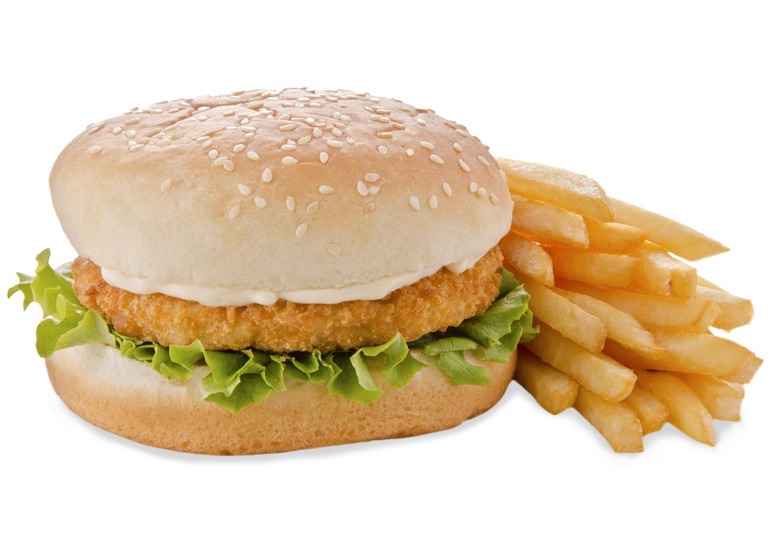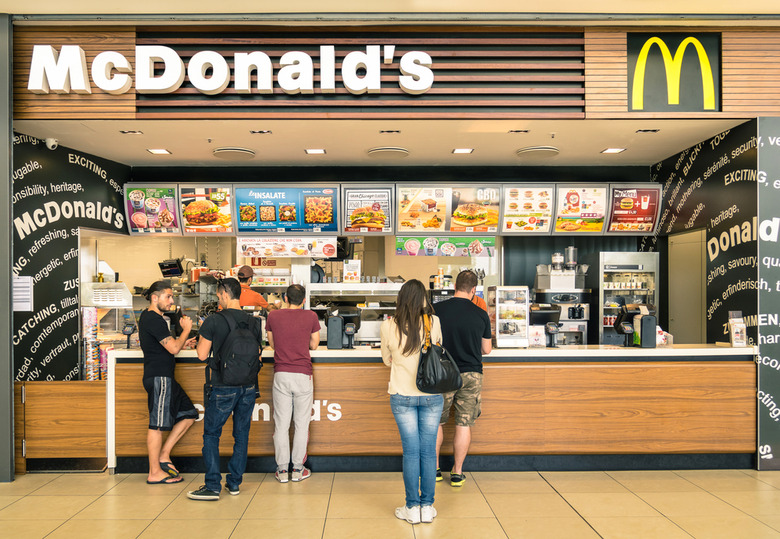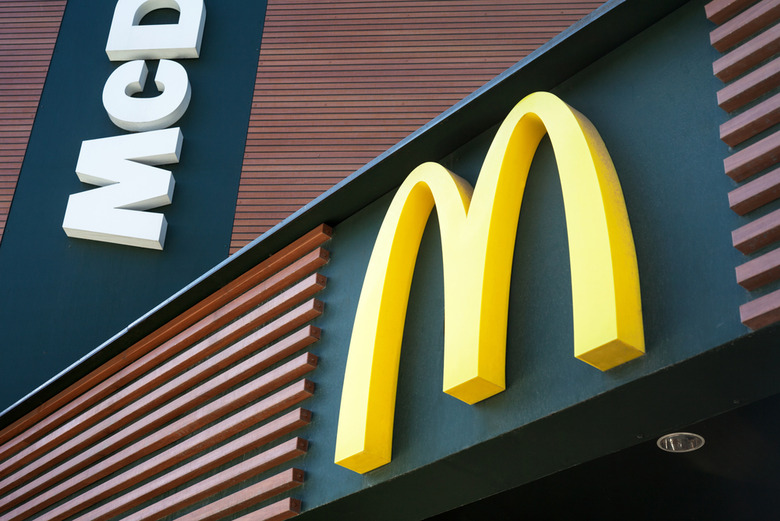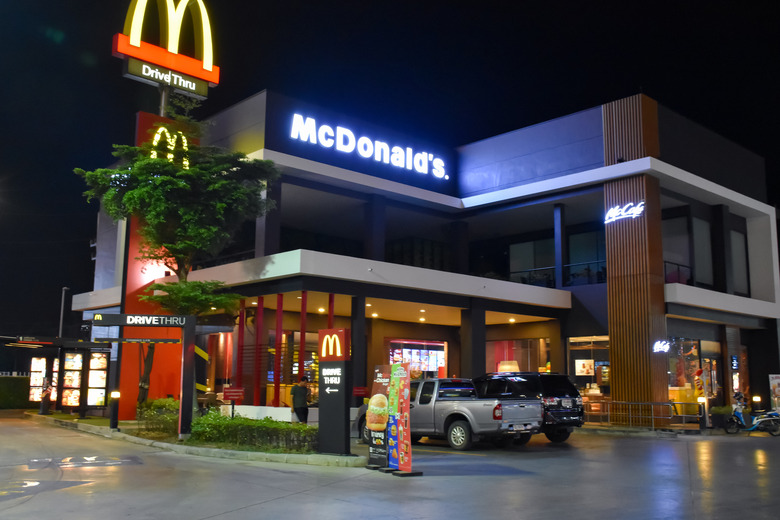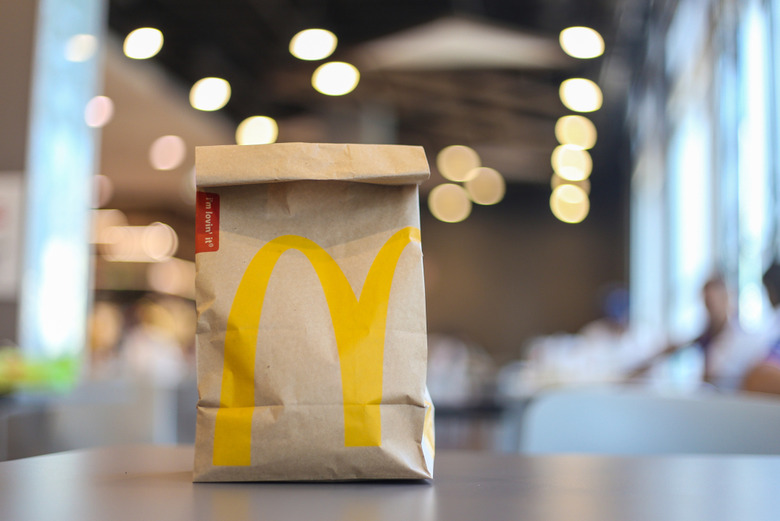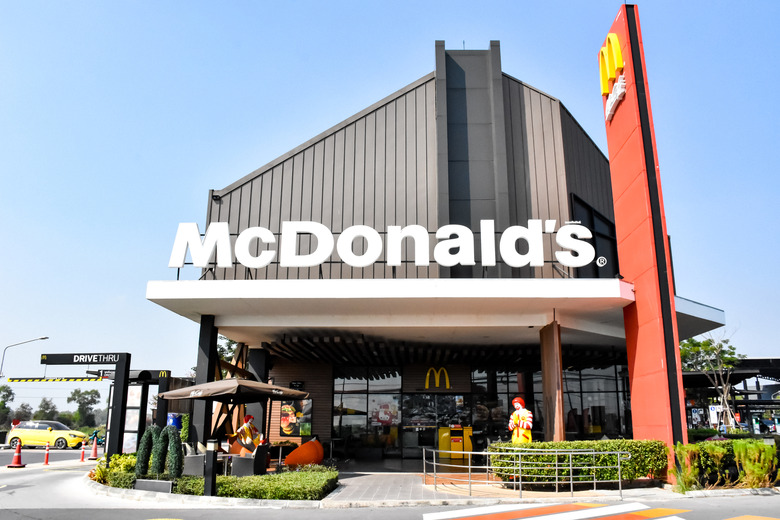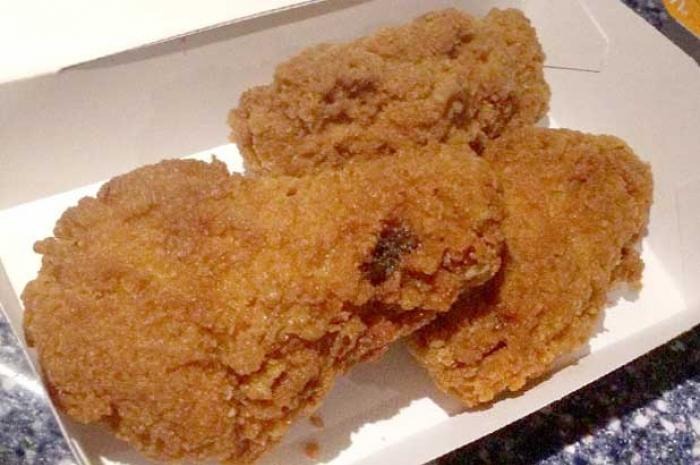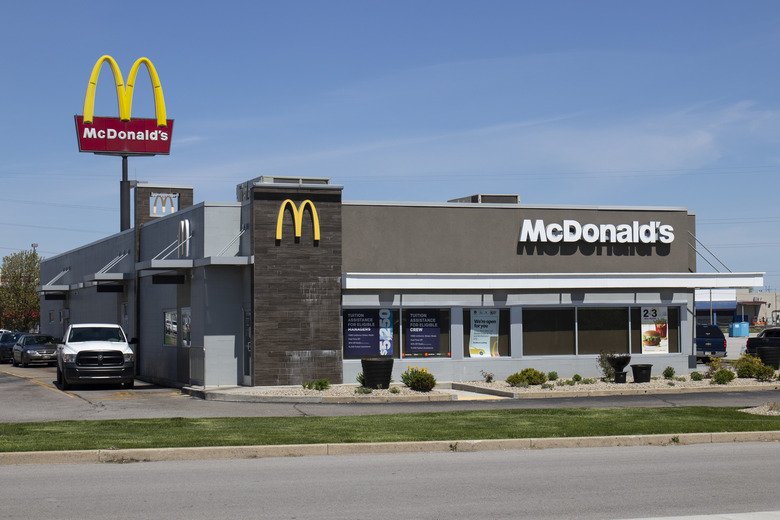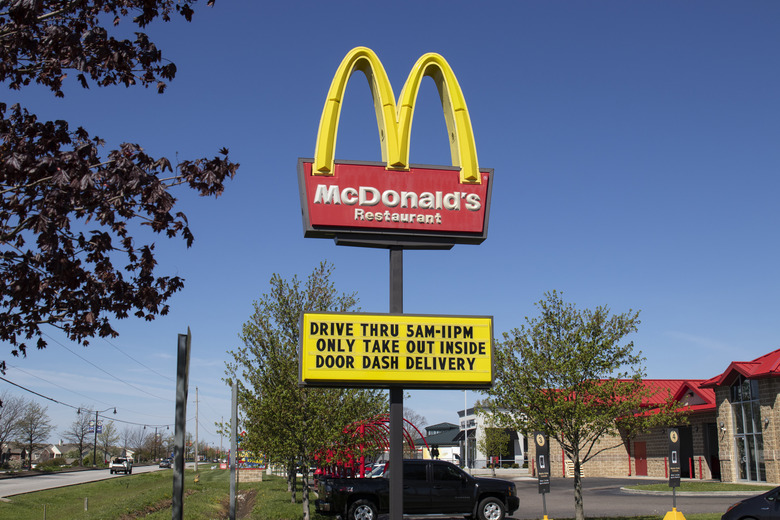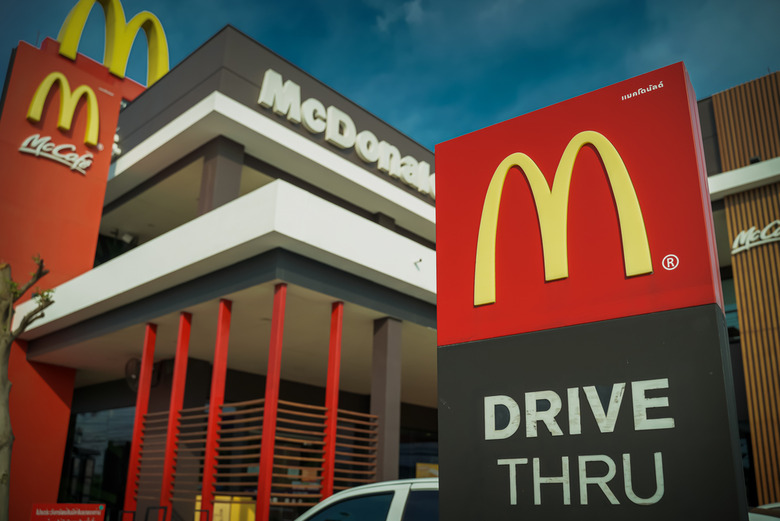McDonald's Menu Items You'll Never See Again Gallery
Bringing a brand-new fast food item into the world is anything but an exact science. You can do all the planning, field testing, and marketing in the world, but at the end of the day, there's no way to know whether a new release will sell until it's unleashed on the public. And few fast food chains have rolled out as many failed menu items as McDonald's.
McDonald's is the largest burger chain in America, and also the one under the most scrutiny. When it rolls out a new menu item, it's usually met with a huge amount of fanfare as well as a major push to make sure that as many folks as possible are aware of it. So when an item fails, it fails spectacularly and embarrassingly.
Though McDonald's has a set menu at most of its locations, the chain is continuously testing out new items, usually in a handful of local markets, in order to try to get an idea of how they'd fare nationally. Many items, like the BBQ Chicken, Corn Dog McNuggets, and Catfish Sandwich, never made it past the local testing phase, and some items, like the infamous McLobster roll, are still only on the menu regionally. Some items were tested out seasonally to see how they fared as well, never to return once the season ended. International McDonald's are even more adventurous, with some truly outrageous creations making it to menus, also meeting with various levels of success.
From a sandwich that caused an international outrage to a handful of misguided forays into completely different styles of cuisine, check out these McDonald's menu items you'll never see again.
Arch Deluxe
McDonald's spent more money on the advertising campaign for the Arch Deluxe in 1996 than it had on any other single item in its history. Costing the company more than $150 million to market, the Arch Deluxe — a quarter-pounder on a split-top potato bun — flopped, making the sandwich a very expensive mistake. The burger was geared toward adults, with add-ons like circular peppered bacon, leaf lettuce, Spanish onions, and a mustard-mayo sauce, and the unconventional ads included kids looking at the burger and saying things like, "I don't understand what the big deal is." When that approach didn't work, new TV ads featured Ronald McDonald out partying and playing pool, a decided shift from the restaurant's family-friendly image.
Hula Burger
Back in the 1960s, a franchise owner was struggling with Friday sales due to being located in a predominantly Roman Catholic area during Lent. So he reached out to McDonald's president Ray Kroc for ideas, and they each added a meat-free option to the menu to see which one sold better. Kroc's idea was called the Hula Burger, an unappetizing-sounding burger with a grilled pineapple slice replacing the beef. The franchise owner's idea? The Filet-O-Fish.
McAfrika
Over the years, McDonald's has released international products in different locations across the world, some to great success. However, in 2002, it released one of the worst menu items and marketing flops in the company's history. The McAfrika (consisting of beef, cheese, and vegetables in a pita), was released in Norway (one of the world's richest countries) during some of the worst famines Southern Africa had ever seen. The campaign backfired so miserably that McDonald's took the item off its menus and set up donation boxes for charities in support of famine relief in Africa. In an amazingly boneheaded move, the company re-launched the sandwich (complete with an "exotic African sauce") in 2008 to promote the Beijing Olympics, and – surprise! – it also received an extremely negative response.
McCrab
The McCrab was created for the Delaware, Maryland, and Virginia markets. The item was meant to resemble a classic Chesapeake crab cake but was lacking in the fresh ingredient department, and quickly went the way of the Dodo.
McDLT
On the surface, it was a good idea: Serve a burger in a Styrofoam container with two separate compartments, one containing the hot beef patty and bottom bun and the other with the cool lettuce and tomato and the top bun. Put them together and you've got the perfect burger! The McDLT stuck around for six years between 1984 and 1990, but was discontinued due to complaints that the large amount of Styrofoam in the packaging was environmentally unfriendly.
McGratin Croquette
While the U.S. market never had the pleasure of experiencing a McGratin Croquette — a deep-fried patty made of macaroni, potato, and shrimp — customers in Japan certainly did. Called the Gurakoro, it didn't last long on Japanese menus, and critics believed it was a combination of odd flavors and poor marketing that led to its ultimate demise.
McHotDog
The McHotDog never caught on in terms of branding with the loyal McDonald's client base, although many agreed it was a tasty product. The real problem was that in the eyes of seasoned patrons, the pallid hot dog didn't match up with the rest of the tried-and-true menu items. In the mid-1990s the dog made a reappearance on seasonal menus in the Midwest, and the McHotDog has appeared from time to time in Japan and other countries.
McLean Deluxe
In 1991, McDonald's tried to jump on the low-fat bandwagon, crafting a burger dubbed the McLean Deluxe, intended to show critics that the fast food giant could offer low-fat options. The advertising campaign bragged about a new kind of burger that was 91 percent fat-free with 10 grams of fat, compared to the Big Mac's 26 grams of fat. The burger actually contained seaweed that was meant to bind the meat together as a way of lowering the fat content. Needless to say, the burger was not a hit with customers, and critics dubbed it the "McFlopper."
McPizza
In the 1980s, McDonald's felt the need to compete with other fast food chains like Domino's and Pizza Hut, and it decided to launch the McPizza as well as other items like lasagna and spaghetti. Although McDonald's executives believed this would make the menu more attractive to those looking for traditional dinner items, the McPizza was unpopular with patrons looking for fast in-and-out service, and it (and the other Italian dishes) quickly left the scene.
McWraps
Introduced in 2013 as a potential "Subway buster" intended to attract a younger clientele, these potentially healthy-ish wraps came with your choice of fried or grilled chicken, cheese, bacon, a selection of sauces, and a couple ingredients that had never before been served at McDonald's, like cucumbers. But they were incredibly labor-intensive to prepare (employees had to steam the tortilla, chop the ingredients, stuff and roll the wrap, and fit it inside a cardboard sleeve), and added to the stress already placed on employees caused by the addition of all-day breakfast. The underperforming menu item was scuttled three years later.
Mighty Wings
McDonald's finally rolled out chicken wings nationally after years of trial and error in September 2013, at the price of about a dollar per wing. They were spicy, crunchy, and generally well-reviewed. The chain bought 50 million pounds of wings with plans to leave them on the menu until supplies ran out, and was hoping to make them a permanent addition after that, but things didn't go exactly as planned. Sales quickly petered out, and McDonald's was left with 10 million pounds of unsold wings. The failure was attributed to price, spiciness, unattractive appearance, and lack of interest from penny-pinching customers. Many franchises resorted to selling them off at clearance prices of 60 cents per wing.
Onion Nuggets
Introduced in the 1970s, McDonald's onion nuggets were clumps of diced onions that were breaded and fried à la chicken nuggets. Even though these actually sound pretty tasty, they didn't make it past the test market stage, and their successor — the Chicken McNugget — went national in 1983.
Roast Beef Sandwich
McDonald's spent years trying to figure out a way to compete with Arby's, and in 1968 it released a roast beef sandwich on a roll with a packet of barbecue sauce on the side. Though it sold well, the menu item required equipping every location with a meat-slicer, an expense that would prevent the sandwich from ever turning a profit. Executives discontinued the sandwich as soon as they realized this, and roast beef has never returned to the menu.
McSalad Shakers
Introduced in 2000 as a fun new way to eat salad (out of a plastic cup with a clear dome lid), Salad Shakers needed to be shaken up after adding in the dressing in order to distribute it. Though the concept worked (plenty of people do the same thing with plastic containers every day for lunch), they were replaced by Premium Salads (served in actual bowls) in 2003.
Super Size
In the mid-1990s, McDonald's launched a campaign allowing customers to "Super-Size" their meal for an added fee. For a while, the idea sold well, and customers around the world were bulking up their orders, as well as calorie counts. After the 2004 release of the documentary Super-Size Me, which exposed the dangers of McDonald's and fast food in general, the concept of super-sizing a meal went rapidly downhill, resulting in the company pulling the offering from menus later that year. When you're at McDonald's, it's probably just better to stick to one of their healthiest menu items, anyway.
More From The Daily Meal:
The Unhealthiest McDonald's Menu Items
The 20 Craziest, Strangest, and Most Extravagant McDonald's Around the World
10 Countries Where You'll Never Find a McDonald's
25 Things You Didn't Know About Your Favorite Fast Food Chains
10 Crazy Secrets Your Favorite Fast Food Chains Don't Want You to Know
